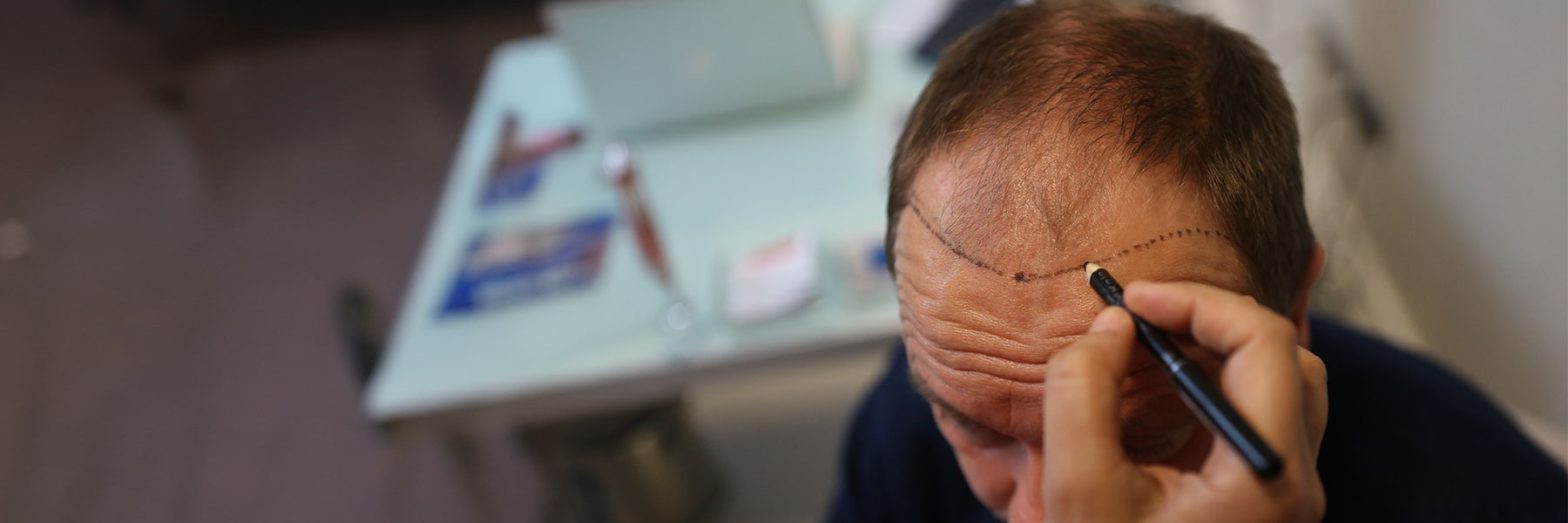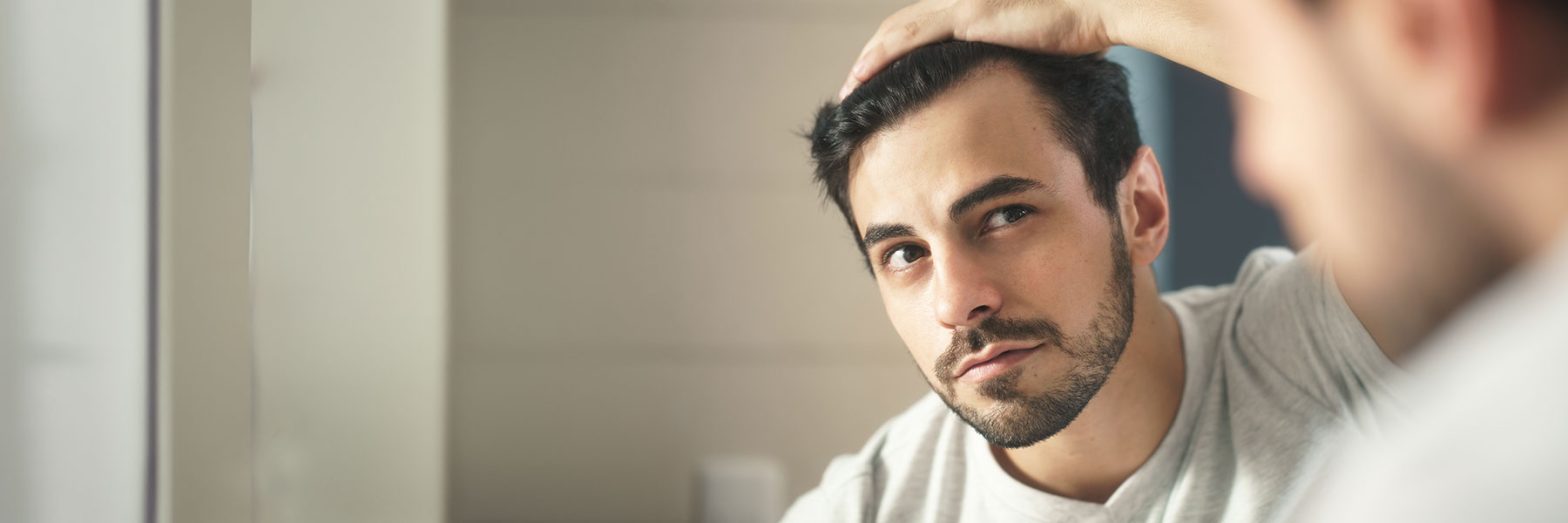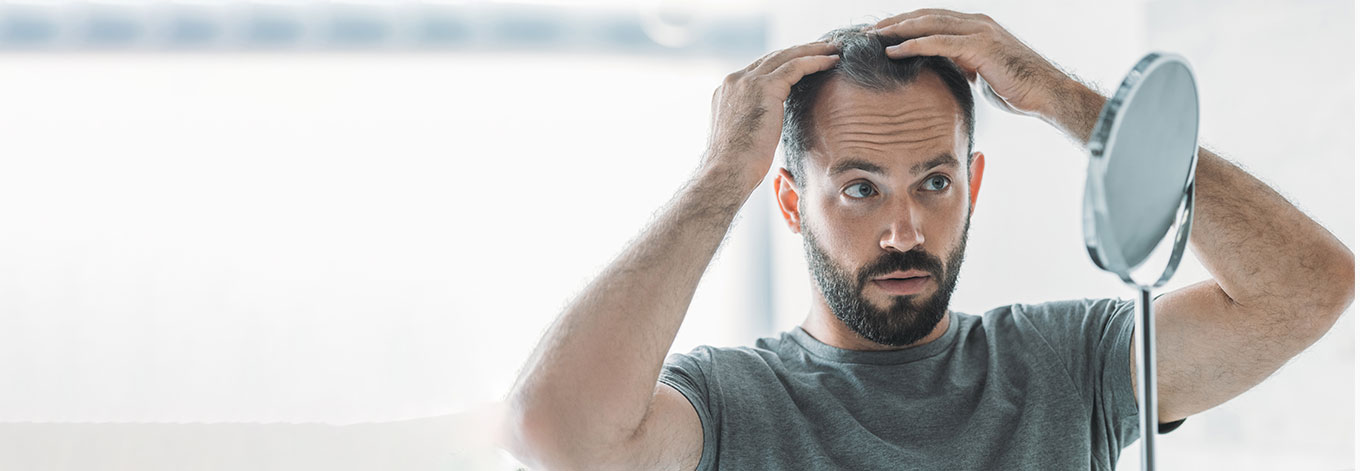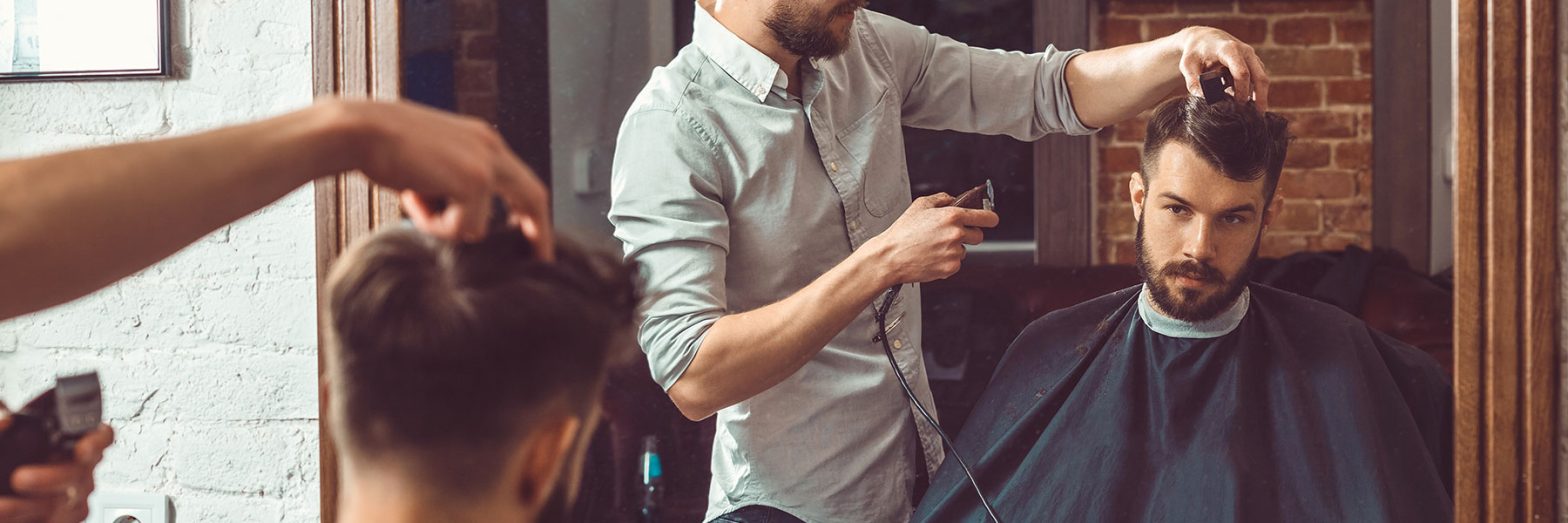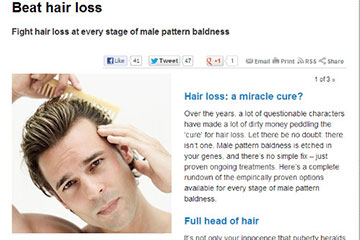
Beat Hair Loss
HAIR LOSS & HAIR TRANSPLANTS
Men’s Health
Hair loss: a miracle cure?
Over the years, a lot of questionable characters have made a lot of dirty money peddling the. Let there be no doubt: there isn’t one. Male pattern baldness is etched in your genes, and there’s no simple fix – just proven ongoing treatments.
Last month, however, it emerged that researchers from the University of California, Los Angeles had inadvertently stumbled upon something which could revolutionise how men tackle baldness in the coming years.
Conducting tests on mice with gut problems, the researchers discovered that injecting the balding critters with a compound called astressin-B led to profuse – and long-term – hair regrowth. Whether this is the long-awaited solution to MPB remains uncertain – and should treatments harnessing this new science emerge it’s unlikely they’ll be available for many years yet – but the future is certainly looking brighter for those with gleaming scalps.
We’re guessing, however, that you’re not content to hang around for a universal remedy to emerge. Your hair certainly won’t. It’s falling out now. You want to keep it now. And you can. Here’s a complete rundown of the empirically proven treatments available for every stage of male pattern baldness.
Full head of hair
[…]
Every strand present and correct? Do your best to keep things that way: everyone – even those with a flawlessly dense thatch – should adhere to some basic follicle-friendly tenets, says The Private Clinic, Harley Street. “First, don’t wash your hair in hot water, use lukewarm. And don’t traumatise wet hair – just dab it dry.” Also, get at least seven hours sleep every night: “Growth hormone levels shoot up at night,” explains The Private Clinic. And there’s a fair few other benefits to additional shuteye, too.
Mild thinning
There are just two clinically proven drug treatments which can prevent further hair loss and promote regrowth. Finasteride (most famously marketed as Propecia) and minoxidil (most famously marketed as Regaine).
Propecia
How does it work? Propecia inhibits the hormone dihydrotestosterone (DHT), which is responsible for miniaturising follicles, eventually leading to fallout. Take a 1mg pill every day and, provided you’re not one of the around 15% of men who are propecia non-respondent, your hair loss should soon stall – and in time you might well see some regrowth as well. A two-year study of 1553 men with mild to moderate thinning found 83% maintained or increased their hair count. Want to save a bit of cash? “Propecia lasts for about 16 hours so even if you take it every other day it should still work,” says The Private Clinic. Just stick to a regular programme to avoid messing with your hormone levels unduly.
[…]
The HairMax LaserComb sounds like exactly the kind of dubious gadget gullible men might fruitlessly trail over their head for years. But, in fact, clinical studies have proven it is effective in encouraging regrowth. A 26-week trial involving 110 patients with male pattern baldness found those who used the HairMax LaserComb rather than an identical sham device showed a significantly greater increase in hair density.
How does it work? “Every cell in your body needs adenosine triphosphate (ATP),” explains The Private Clinic. “It’s the body fuel for cells. The evidence suggests lasers can increase the ATP available for hair growth – basically increasing blood supply to the scalp.” Unfortunately, playing Star Wars with your bonce doesn’t come cheap – the latest 12-laser comb is £420.
Heavy thinning
If you have left things too late for pharmacological intervention to be satisfactory, a hair transplant might be your best bet. As always with hair loss, the earlier you tackle things, the better. An average man starts with around 100,000 hairs, explains The Private Clinic, and you need at least 25,000 skilfully grafted about your dome in order to achieve a decent look. The fewer hairs still hanging around up top, therefore, the less likely it is even the most skilful hair surgeon will be able to get you back something resembling those flowing locks of yore. “You can’t take 25,000 just from the back because the back will look too thin. So catching it early is always better,” says The Private Clinic.
What’s the process? Hairs are extracted one by one from the back of the head and then grafted into your scalp. A six or seven hour session will see around 8000 hairs relocated in this way, so you may require more than one visit. It’s not particularly painful: you should, says The Private Clinic, be able to head back into work the next day. Transplanted hairs aren’t subject to the follicle-thinning effects of male pattern baldness, but those old hairs still clinging on are, so you’ll need to continue a prevention programme involving propecia and/or minoxidil. Which, after splashing out at least £3,000 on surgery, may smart a little.
Completely bald
Once short back and sides is the only hairstyle that remains an option, it’s too late for a transplant. But you’re not necessarily condemned to a sunburnt scalp every holiday from here on in. As well as the promising news about astressin-B, The Private Clinic are confident that the incipient science of gene manipulation will soon banish baldness for good. “We can clone hair at the moment, but the problem is rejection,” he explains. Today, a single hair can be removed, cloned 10,000 times, and all of them transplanted into the head. The problem is they’ll only stay there for around two weeks. “After that, for some unknown reason, there’s a reaction and the hair sheds,” says The Private Clinic. The cure is coming, but until then it’s all about stalling.




